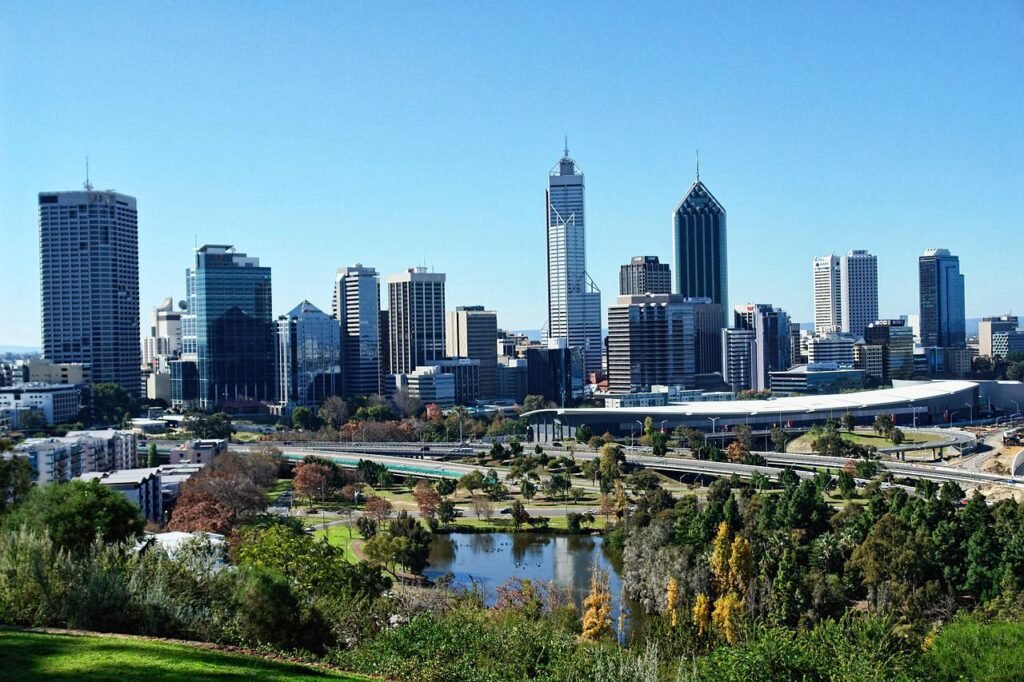What does the ABS 2021 Census tells us about population growth rates across Western Australia?
The overall rate of population growth in WA remained at moderate levels from 2016 to 2021 (7.5%), after a much faster period of growth from 2006 to 2016, based on the mining investment boom. The fastest growing Local Government Areas (LGAs) in Western Australia were a combination of small rural LGAs with increases in population due to mining and greenfield growth areas on the fringe of Perth. The fastest growing LGA in WA between 2016 and 2021 was Mount Magnet (35.5%).
Almost all LGAs in Perth and surrounds benefited from the large overseas migration gain that preceded the COVID-19 pandemic. The fastest growing LGAs in percentage terms between 2016 and 2021 were mainly on the fringe of Perth. Serpentine-Jarrahdale was the fastest growing LGA in Perth to 2021. It grew by 19.9% or more than 5,340 persons. The largest net gain was in Wanneroo at just under 20,900 persons. There was also notable growth in inner LGAs, such as Perth, Claremont and Fremantle based on higher density residential development. See table below.
Top 10 Growth LGAs by rate, Metropolitan Perth, 2016-2021

Source: ABS Census of Population and Housing, 2016 and 2021
The fastest growing LGAs in Regional WA were almost exclusively small rural LGAs with low base populations. Many of these LGAs benefitted from expansion to mining in the local area, notably in areas with gold production. The main exceptions to this rule include the rural lifestyle / coastal areas of Augusta-Margaret River and Nannup.
Top 10 Growth LGAs by rate, Regional WA, 2016-2021

Source: ABS Census of Population and Housing, 2016 and 2021
Most LGAs in Perth had moderate to strong population growth, although the fastest rates of gain were on the fringe. The growth in these areas was driven by high rates of greenfield residential development in new estates, with Serpentine-Jarrahdale, Armadale, Kwinana and Swan at the forefront of growth to 2021. Population growth was surprisingly strong in the inner areas of Perth. This is notable as the impact of COVID-19 was much more significant in other cities in Australia, especially in areas heavily associated with tertiary education exports. The only LGA that experienced population loss between 2016 and 2021 was Peppermint Grove. Mundaring also experienced little growth to 2021.
It is interesting to note that areas that have experienced significant redevelopment over the past decade or two, such as South Perth and Bayswater have slowed in the most recent intercensal period. However, some LGAs such as Perth and Claremont have experienced strong rates of growth to 2021. See map below.
Population growth, Greater Perth LGAs and surrounds, 2016-21

Source: ABS Census of Population and Housing, 2016 and 2021
Population growth in Regional WA was a patchwork quilt between 2016 and 2021. Most coastal areas to the north and south of Perth grew strongly based on Perth ‘overspill’. In addition, areas in the South-West and Great Southern grew strongly, with Busselton, Margaret River and the Albany region attracting more people.
Population decreases were experienced in much of the wheatbelt, although there were some exceptions, including Bruce Rock, Woodanilling, Boyup Brook and Wandering. The decreasing population in the wheatbelt is a long-term trend.
These areas may have benefited from new mining projects in these regions. Ravensthorpe increased significantly between 2016 and 2021, reflecting the re-opening of the Ravensthorpe Nickel Mine and gold mining operations in the area. See maps below.
Population growth, Regional WA LGAs (South), 2016-21

Source: ABS Census of Population and Housing, 2016 and 2021
The other notable growth area in Regional WA was in the mining areas in the greater Gascoyne Region. Mount Magnet, Sandstone, Cue, Meekatharra, Leonora, Exmouth and Laverton all experienced growth in excess of 10%. As a result of the growth in the Sandstone LGA from 2016 to 2021, it is no longer the least populous LGA in WA, with Murchison now having that distinction. These gains in population appear to be related to increased gold production, following a large increase in world prices from 2020 onwards.
Many of the LGAs in the Pilbara with significant iron ore and gas projects have decreased markedly between 2016 and 2021. While many of these LGAs have small populations, Ashburton lost more than 5,600 persons between 2016 and 2021, as various projects were completed. The population of Barrow Island alone fell from 1,965 to 45 persons with the completion of the construction phase of the Gorgon Gas project. Interestingly, there was still growth in the major population centres of the Pilbara, notably in Port Hedland.
By comparison, there was little growth in the major centre of Geraldton from 2016 to 2021, which is in stark contrast to substantial increases in previous intercensal periods. Very few areas in the surrounding catchment of Geraldton experienced population gains to 2021, suggesting a difficult time for rural industries in this period.
Population growth, Regional WA LGAs (North), 2016-21

Source: ABS Census of Population and Housing, 2016 and 2021
Stay tuned for more stories from the 2021 Census and our quick fire series on LinkedIn.

